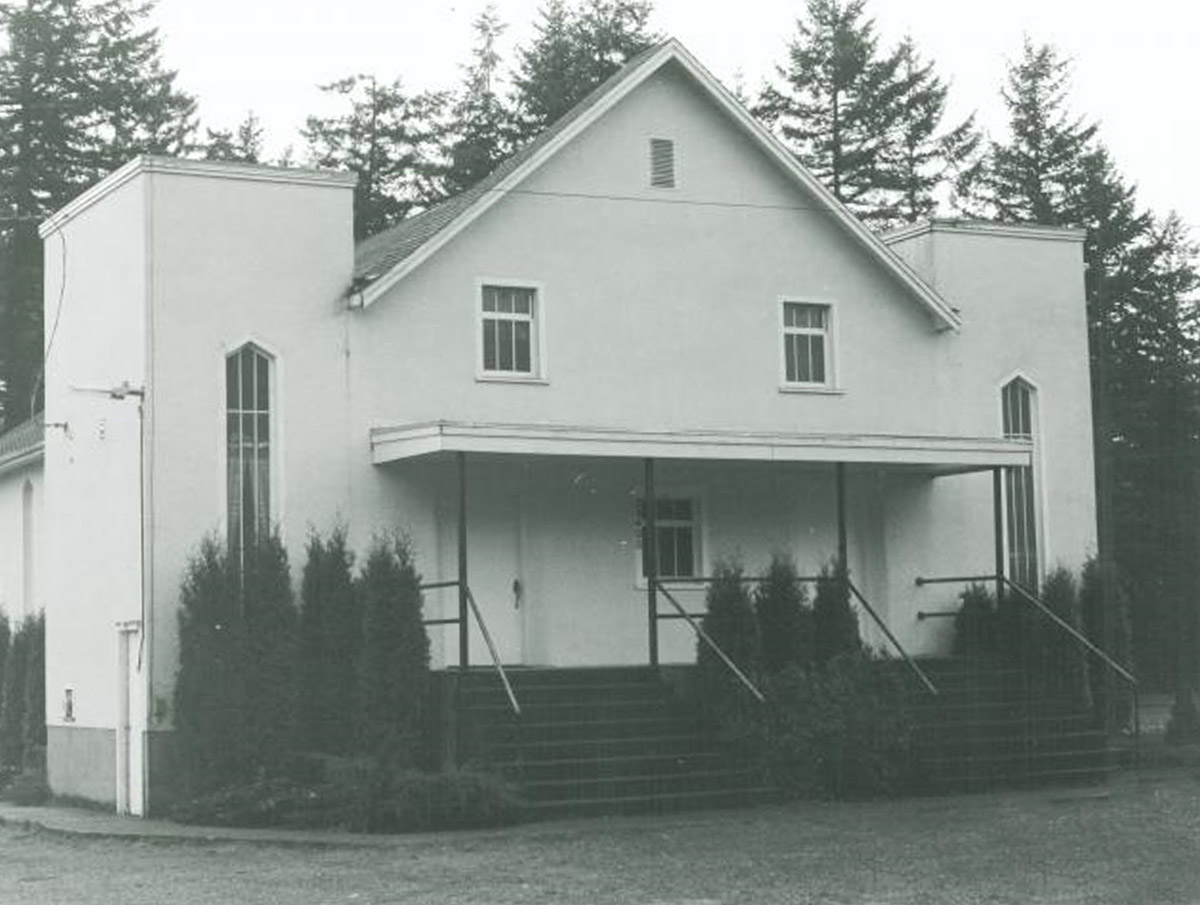Peardonville Mennonite Church

The Peardonville Mennonite Church in Abbotsford, British Columbia was established in 1951 as a Sunday School outreach. A year later it grew into a preaching station and was organized as a congregation. Over the years, the church experienced changes in leadership and membership, eventually leading to a split and decline. In 1969, the building was purchased by the Evangelical Mennonite Church, but it was later sold in 1983 after the EMC discontinued its work.
* * *
The Peardonville Mennonite Church, located in Abbotsford, British Columbia, began its services in 1951. Originally known as Peardonville Mennonite Mission, it started as a Sunday School outreach of the West Abbotsford Mennonite Church under the leadership of Tina Loewen. The purpose of this mission was to cater to the families settling near the U.S. border in the South Aberdeen area. Over time, the mission expanded into a preaching station, holding services at the Peardonville Hall.
In February 1952, a group of 15 dissatisfied members, unhappy with H. M. Epp's leadership at West Abbotsford, decided to establish a new congregation at Peardonville. Led by Johann Goerz and assisted by Jacob Berg, the church officially organized on March 17, 1952, with 28 members. A building project commenced that same year, resulting in the construction of a basement measuring 30 ft. by 60 ft., which was completed within six months.
The Conference of Mennonites in British Columbia assumed responsibility for the work at Peardonville, appointing Albert Nickel as the leader from August 26, 1956, until January 1, 1958. During this time, the upper floor of the sanctuary was completed in the autumn of 1957. Following Nickel's departure, John Julius Klassen assumed leadership, serving until September 30, 1963. Under Klassen's guidance, the congregation formally organized itself on November 22, 1959, with 52 charter members. By 1961, their membership had grown to 57, and they joined the Conference of Mennonites in British Columbia.
Over the years, several ministers served the Peardonville congregation, including Isaac Ens from January to September 1964, and David Letkeman from July 1965 to September 1967. By 1964, the church had 48 members, with 98 individuals participating in the Sunday School program. However, internal disagreements eventually led to a division within the church and a subsequent decline in membership. In 1968, the Peardonville church dissolved, leaving only 28 members.
In 1969, the Evangelical Mennonite Church (EMC) purchased the building for $1,000. The British Columbia conference transferred the sale proceeds to the General Conference Mission Board in Newton, Kansas, which had previously provided a grant of the same amount to the congregation. The EMC eventually discontinued its operations, and the building was subsequently utilized by various groups until it was sold in 1983.
In February 1952, a group of 15 dissatisfied members, unhappy with H. M. Epp's leadership at West Abbotsford, decided to establish a new congregation at Peardonville. Led by Johann Goerz and assisted by Jacob Berg, the church officially organized on March 17, 1952, with 28 members. A building project commenced that same year, resulting in the construction of a basement measuring 30 ft. by 60 ft., which was completed within six months.
The Conference of Mennonites in British Columbia assumed responsibility for the work at Peardonville, appointing Albert Nickel as the leader from August 26, 1956, until January 1, 1958. During this time, the upper floor of the sanctuary was completed in the autumn of 1957. Following Nickel's departure, John Julius Klassen assumed leadership, serving until September 30, 1963. Under Klassen's guidance, the congregation formally organized itself on November 22, 1959, with 52 charter members. By 1961, their membership had grown to 57, and they joined the Conference of Mennonites in British Columbia.
Over the years, several ministers served the Peardonville congregation, including Isaac Ens from January to September 1964, and David Letkeman from July 1965 to September 1967. By 1964, the church had 48 members, with 98 individuals participating in the Sunday School program. However, internal disagreements eventually led to a division within the church and a subsequent decline in membership. In 1968, the Peardonville church dissolved, leaving only 28 members.
In 1969, the Evangelical Mennonite Church (EMC) purchased the building for $1,000. The British Columbia conference transferred the sale proceeds to the General Conference Mission Board in Newton, Kansas, which had previously provided a grant of the same amount to the congregation. The EMC eventually discontinued its operations, and the building was subsequently utilized by various groups until it was sold in 1983.
